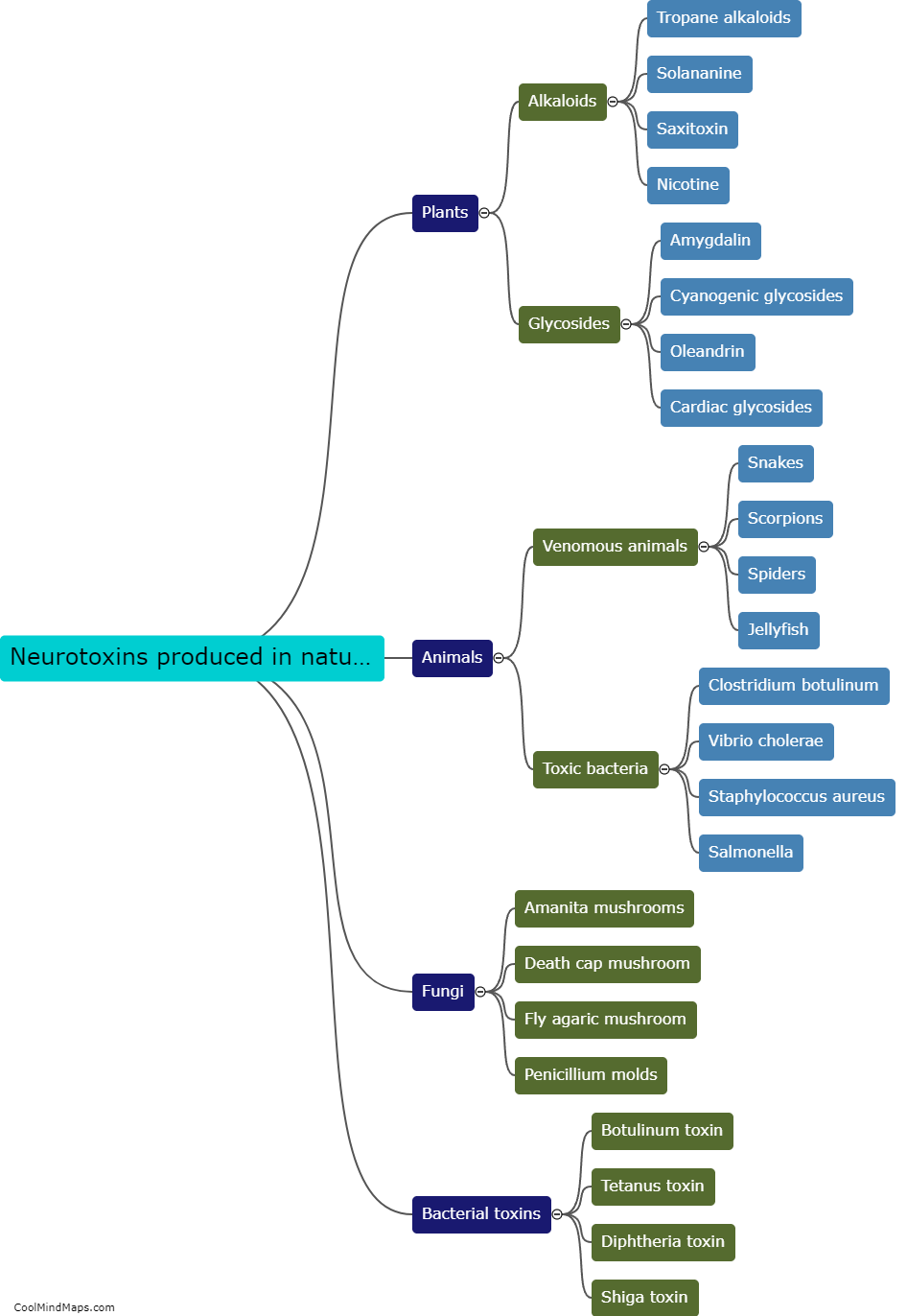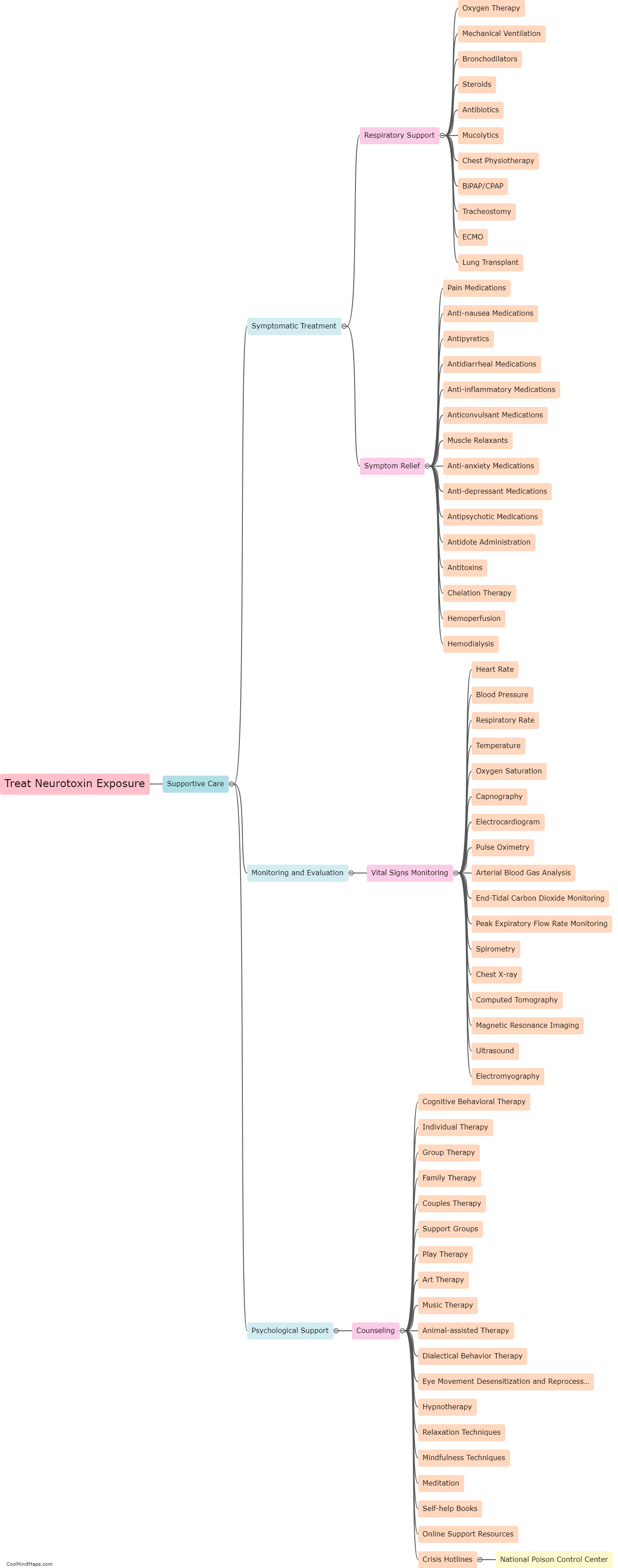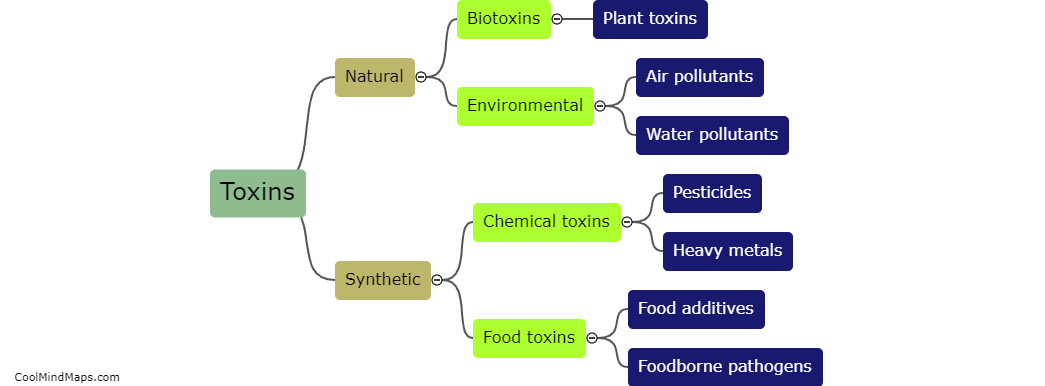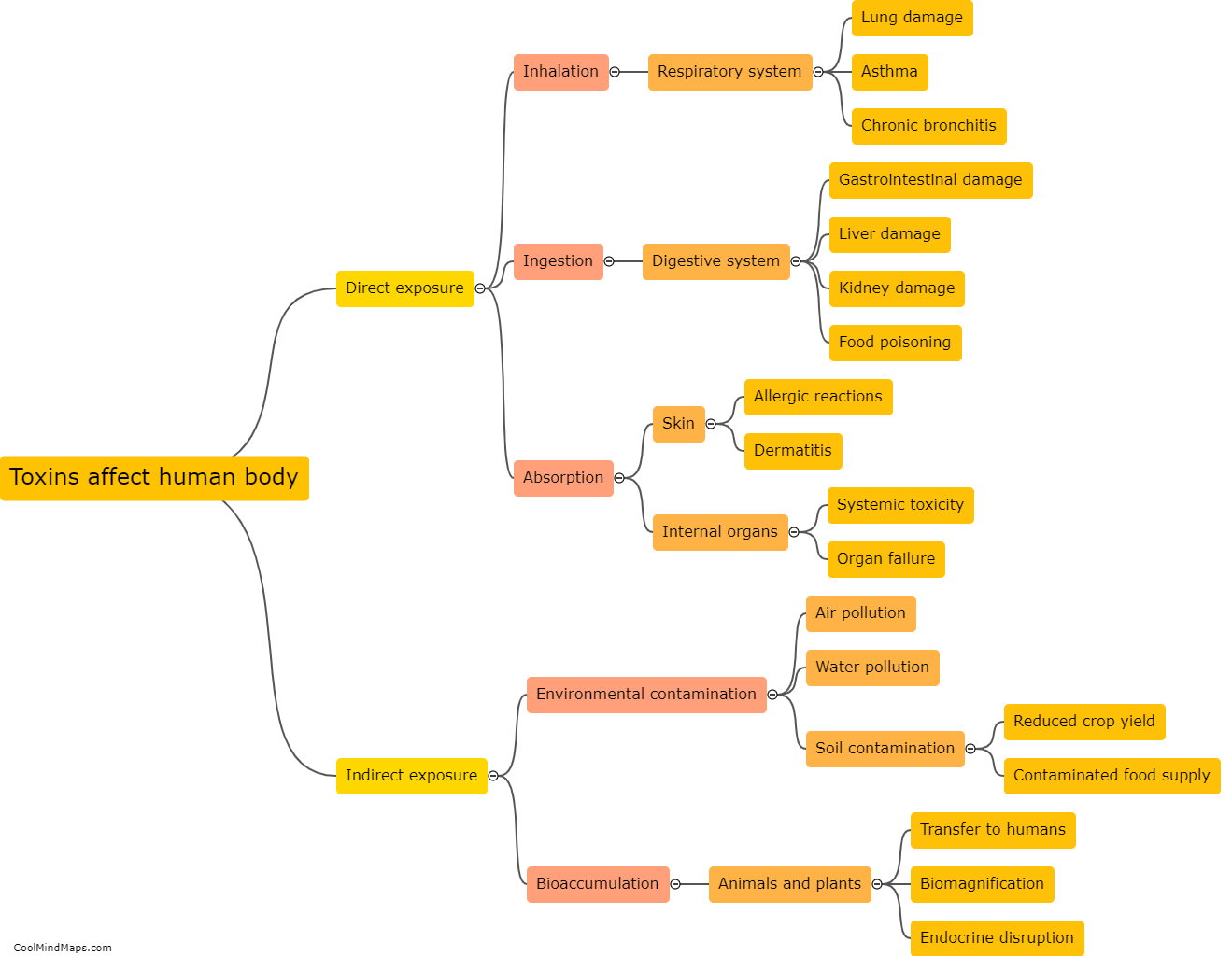How can toxins be classified?
Toxins can be classified based on various criteria, including their source, mechanism of action, and chemical structure. Based on their source, toxins can be categorized as natural toxins, produced by living organisms such as plants, animals, and microorganisms, or as anthropogenic toxins, which are human-made substances like pollutants and industrial chemicals. Mechanistically, toxins can be grouped into numerous categories, such as neurotoxins, which target the nervous system, or cytotoxins, which damage cells. Additionally, toxins can also be classified according to their chemical structure, such as alkaloids, glycosides, and mycotoxins. Understanding the classification of toxins is crucial for identifying and treating their effects on living organisms and developing appropriate strategies to prevent or mitigate their harmful impacts.

This mind map was published on 3 December 2023 and has been viewed 87 times.











